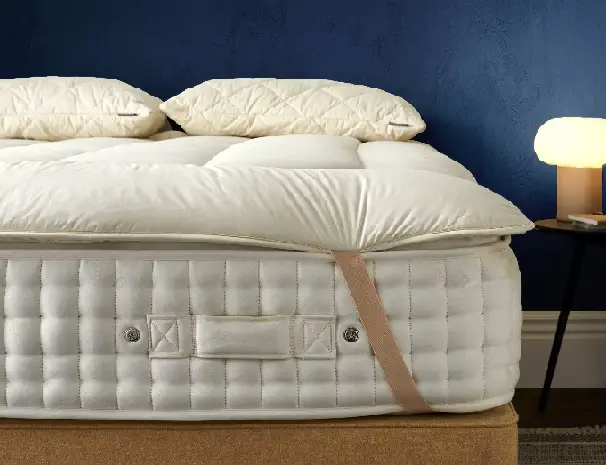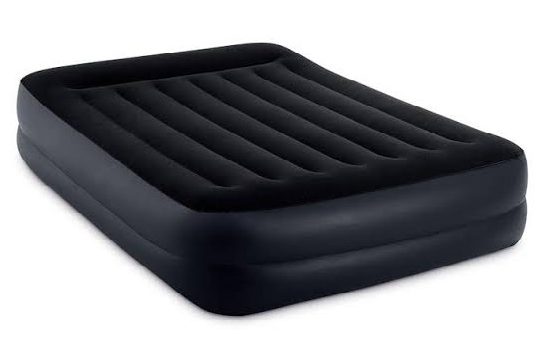Imagine sinking into a soft, fluffy cloud each night as you lay your head on your pillow. But have you ever wondered what’s inside that cozy haven of comfort? In this article, we’ll take a peek into the fascinating world of pillow filling materials. From luxurious down feathers to innovative memory foam, we’ll explore the different materials that make up your beloved pillow, each offering its unique benefits and helping you achieve a restful night’s sleep. So, let’s embark on this exploration together and unravel the mysteries of what lies inside your pillow.
Table of Contents
Natural Filling Materials
Feathers
Feathers are a commonly used natural filling material for pillows. They are lightweight and provide a soft and luxurious feel. Feathers are known for their excellent insulation properties, keeping you warm in the colder months. However, they may not be suitable for individuals with allergies, as feathers can trigger allergic reactions in some people.
Down
Down is the softer and fluffier undercoating of feathers. It is highly prized for its exceptional softness and ability to retain heat. Down pillows offer a cloud-like feel, providing excellent comfort and support. Like feathers, down may cause allergies, so it is essential to consider this if you have sensitivities.
Cotton
Cotton is a natural filling material that is breathable, hypoallergenic, and durable. It offers a cool and comfortable sleep surface, making it an excellent choice for hot sleepers. Cotton pillows are known for their ability to wick away moisture and provide a soft yet supportive feel.
Wool
Wool is a natural material that is soft, breathable, and temperature-regulating. It has natural moisture-wicking properties, keeping you dry and comfortable throughout the night. Wool pillows are also resistant to dust mites and mildew, making them a suitable option for allergy sufferers.
Synthetic Filling Materials
Polyester
Polyester is a synthetic filling material that is commonly used in pillows. It is affordable, lightweight, and easy to care for. Polyester pillows offer medium support and a relatively firm feel. They are hypoallergenic, making them suitable for individuals with allergies or sensitivities.
Microfiber
Microfiber is a type of synthetic filling material made from finely woven fibers. It is known for its softness, breathability, and moisture-wicking properties. Microfiber pillows provide a plush and luxurious feel. They are also hypoallergenic and resistant to dust mites and mold.
Memory Foam
Memory foam is a synthetic material that responds to heat and pressure, contouring to the shape of your head and neck. It offers excellent support and alignment, relieving pressure points and reducing neck and shoulder pain. Memory foam pillows are known for their durability and ability to retain their shape over time.
Specialty Filling Materials
Buckwheat
Buckwheat pillows are filled with buckwheat hulls, the outer shell of the buckwheat seed. They are known for their unique ability to conform to the shape of your head and neck, providing customizable support. Buckwheat pillows are breathable, allowing air to circulate and keeping you cool throughout the night.
Latex
Latex pillows are made from natural or synthetic latex foam. They offer excellent support and contouring to the head and neck. Latex is hypoallergenic, resistant to dust mites, and mold, making it a suitable option for allergy sufferers. Latex pillows also provide significant durability and have a longer lifespan compared to other materials.
Bamboo
Bamboo pillows are filled with shredded memory foam or bamboo fiber. Bamboo is a sustainable and eco-friendly material known for its natural moisture-wicking and cooling properties. Bamboo pillows offer a soft and supportive feel and are hypoallergenic, making them ideal for individuals with allergies.
Common Pillow Fillings in Detail
Feathers
Feather pillows are made by using the outer feathers of ducks or geese. They provide a luxurious and fluffy feel while offering medium support. Feathers tend to compress over time, and some individuals may find them too firm or allergenic.
Down
Down pillows are considered the premium option among natural fillings. They are made from the soft and fluffy undercoat of waterfowl, such as ducks or geese. Down pillows offer exceptional softness, lightweight, and excellent insulation. However, they can be expensive and may not be suitable for individuals with allergies.
Cotton
Cotton pillows are filled with cotton fibers, providing a soft and breathable sleep surface. They offer light to medium support and are suitable for those who prefer a cooler sleep environment. Cotton pillows are hypoallergenic and easy to maintain, making them a popular choice.
Wool
Wool pillows are made from natural sheep’s wool, which is soft, breathable, and regulates body temperature. They offer medium support and are suitable for all seasons. Wool pillows are hypoallergenic and resistant to dust mites, mold, and mildew.
Polyester
Polyester pillows are filled with polyester fibers, offering a medium-firm feel. They are affordable, lightweight, and easy to care for. Polyester pillows are hypoallergenic and suitable for individuals with allergies.
Microfiber
Microfiber pillows are made from finely woven synthetic fibers, providing a soft and plush feel. They offer medium support and are breathable, keeping you cool throughout the night. Microfiber pillows are hypoallergenic and resistant to dust mites and mold.
Memory Foam
Memory foam pillows are made from a polyurethane foam that responds to heat and pressure. They contour to the shape of your head and neck, providing excellent support and alignment. Memory foam pillows are durable, long-lasting, and can help relieve neck and shoulder pain.
Buckwheat
Buckwheat pillows are filled with buckwheat hulls, which offer natural support and ventilation. They conform to the shape of your head and neck, providing customizable support. Buckwheat pillows are known for their breathability and cooling properties.
Latex
Latex pillows are made from natural or synthetic latex foam. They offer exceptional support and contouring to the head and neck. Latex pillows are hypoallergenic, resistant to dust mites and mold, and provide significant durability and longevity.
Bamboo
Bamboo pillows are filled with shredded memory foam or bamboo fiber. They offer a soft and supportive feel and are known for their moisture-wicking and cooling properties. Bamboo pillows are hypoallergenic and environmentally friendly.
Factors to Consider When Choosing a Pillow Filling Material
Sleeping Position
Your sleeping position plays a vital role in determining the ideal pillow filling material for you. Back sleepers generally benefit from medium support that keeps the head and neck aligned. Side sleepers may need a firmer pillow to provide adequate support, while stomach sleepers may require a softer and flatter pillow.
Allergies and Sensitivities
If you have allergies or sensitivities to certain materials, it is crucial to choose a pillow filling that is hypoallergenic and resistant to allergens such as dust mites and mold. Natural fillings like feathers and down may cause allergies in some individuals, while synthetic fillings like polyester and microfiber are hypoallergenic options.
Support and Comfort
Consider how much support you need and what level of firmness or softness you find most comfortable. Memory foam and latex pillows offer excellent support and contouring, while feather pillows provide a softer and fluffier feel.
Durability and Lifespan
The durability and lifespan of a pillow filling material can impact its overall value. Natural fillings like feathers and down tend to compress over time and may require regular fluffing. Synthetic fillings like polyester and microfiber are typically more durable and retain their shape for longer.
Price and Budget
Pillow filling materials vary in price, with natural fillings typically being more expensive than synthetic options. Consider your budget and choose a filling material that meets your needs while staying within your price range.
Environmental Considerations
If sustainability is important to you, consider choosing a pillow filling material that is eco-friendly. Natural materials like wool and bamboo are renewable and biodegradable, making them more environmentally friendly options.
Care and Maintenance of Different Pillow Filling Materials
Feathers and Down
Feather and down pillows require regular fluffing to maintain their loft and shape. Spot cleaning or dry cleaning is often recommended to keep them clean and hygienic.
Cotton and Wool
Cotton and wool pillows can usually be machine-washed and dried, making them easy to clean and maintain. Follow the care instructions provided by the manufacturer for best results.
Polyester and Microfiber
Polyester and microfiber pillows can often be machine-washed and dried. It is essential to follow the care instructions provided to prevent clumping or damage to the filling. Some pillows may require occasional fluffing to maintain their loft.
Memory Foam
Memory foam pillows are typically spot clean only, as machine-washing can damage the foam. Regularly airing out the pillow and spot cleaning any stains is recommended to keep it clean and fresh.
Buckwheat
Buckwheat pillows are not machine-washable. The hulls can be removed, and the cover can be washed. To refresh the buckwheat hulls, they can be placed in the sun for a few hours.
Latex
Latex pillows are durable and can be spot cleaned as needed. It is best to refer to the care instructions provided by the manufacturer for specific cleaning instructions.
Bamboo
Bamboo pillows are often machine-washable, but it is important to check the care instructions provided. Shredded memory foam or bamboo filling may require regular fluffing to maintain its shape.
The Importance of Choosing the Right Pillow Filling Material
Impact on Sleep Quality
The right pillow filling material can significantly impact your sleep quality. Choosing the wrong pillow can lead to discomfort, pain, and restless nights. By selecting a pillow filling material that aligns with your needs and preferences, you can enhance your sleep quality and wake up feeling refreshed.
Health Considerations
Certain pillow filling materials may exacerbate allergies or sensitivities, leading to symptoms like sneezing, congestion, or skin irritation. It is essential to choose a filling material that is hypoallergenic and resistant to allergens if you have sensitivities. Additionally, selecting a pillow that provides proper support can help alleviate neck and shoulder pain and promote spinal alignment.
Personal Preference
Choosing the right pillow filling material is a highly personal decision. What works for one person may not work for another. Consider your unique needs, preferences, and sleep habits when selecting a pillow filling material. Trying different options and determining what feels most comfortable and supportive for you is key.
Conclusion
Choosing the right pillow filling material is essential for a good night’s sleep. Natural fillings like feathers, down, cotton, and wool provide luxurious comfort but may not be suitable for individuals with allergies. Synthetic fillings like polyester, microfiber, and memory foam offer affordability, hypoallergenic properties, and excellent support. Specialty fillings like buckwheat, latex, and bamboo provide unique benefits such as customizable support, durability, and eco-friendliness. Consider factors like sleeping position, allergies, support, durability, budget, and environmental impact when selecting the perfect pillow filling material for your needs. By doing so, you can create a comfortable and supportive sleep environment that promotes restful sleep and overall well-being.



